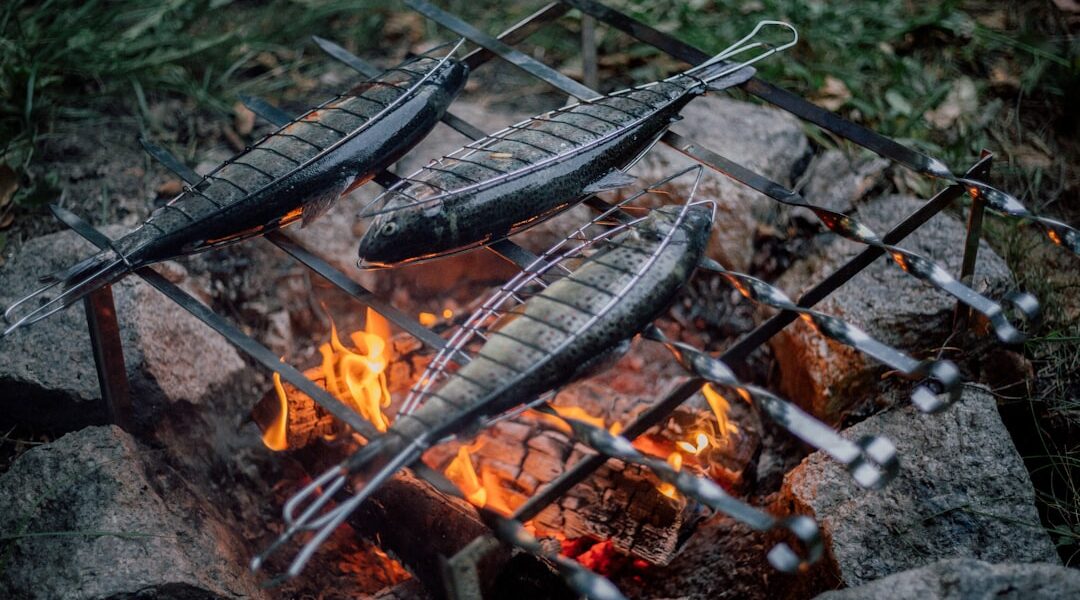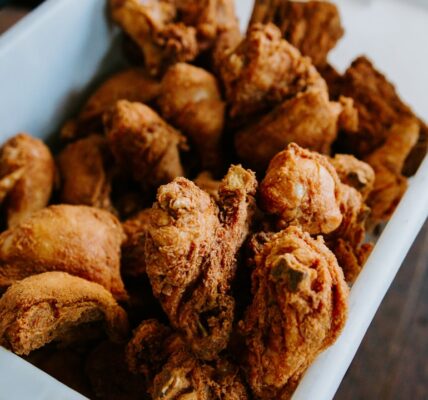Fogón cuisine is a traditional cooking method prevalent in many Latin American countries, characterized by the use of a clay or brick hearth called a “fogón.” This cooking style has been practiced for centuries and is deeply ingrained in the region’s cultural heritage. The fogón, typically an open-flame stove, is central to this culinary tradition and contributes to the distinct flavors of the dishes prepared using this method. The cooking techniques employed in fogón cuisine are relatively simple but highly effective in creating flavorful and textured dishes.
Key ingredients commonly used include corn, beans, and various types of chilies, which are staples in many Latin American culinary traditions. Slow cooking over low heat is a fundamental aspect of fogón cuisine, allowing for the thorough development and melding of flavors. Dishes prepared using the fogón method are often described as hearty, filling, and comforting.
The slow cooking process and use of traditional ingredients result in meals that are not only satisfying but also reflect the history and cultural identity of the communities that have preserved this cooking style over generations.
Key Takeaways
- Fogon cuisine is a traditional cooking style that utilizes unique flavors and techniques.
- The history and origins of fogon cuisine can be traced back to traditional cooking methods.
- Essential ingredients of fogon cuisine include local and indigenous flavors that contribute to its distinct taste.
- The art of fogon cooking involves understanding the techniques and tools used in traditional cooking.
- Regional variations in fogon cuisine showcase the diverse flavors across different regions.
The History and Origins of Fogon Cuisine: Tracing the Roots of Traditional Cooking Methods
The Influence of European Colonization
As European colonization spread throughout Latin America, new ingredients and cooking techniques were introduced, leading to a fusion of indigenous and European flavors. This blending of culinary traditions had a profound impact on the development of fogon cuisine.
Regional Variations and Unique Flavors
Over time, each region developed its own distinct variations of fogon cooking, incorporating local ingredients and flavors to create dishes that are unique to their area. This diversity has contributed to the rich tapestry of culinary traditions associated with fogon cuisine.
A Vibrant Culinary Legacy
Today, fogon cuisine is a vibrant and diverse culinary tradition that showcases the creativity and resourcefulness of Latin America’s indigenous peoples and their European colonizers. The fusion of flavors and techniques has resulted in a unique and flavorful cuisine that continues to evolve and thrive.
The Essential Ingredients of Fogon Cuisine: Exploring the Local and Indigenous Flavors

Fogon cuisine is characterized by the use of local and indigenous ingredients that are central to the flavors and textures of the dishes. Corn, beans, squash, and various types of chilies are staples in fogon cooking, providing a rich and earthy base for many traditional dishes. These ingredients are often combined with meats, such as pork, chicken, or beef, to create hearty and satisfying meals that are beloved by many.
In addition to these staple ingredients, fogon cuisine also makes use of a variety of herbs and spices to add depth and complexity to the flavors. Cilantro, oregano, and epazote are commonly used to season dishes, while spices such as cumin and cinnamon add warmth and depth to many traditional recipes. The use of these ingredients reflects the deep connection between fogon cuisine and the land, as well as the importance of preserving traditional flavors and techniques.
The Art of Fogon Cooking: Understanding the Techniques and Tools Used in Traditional Cooking
| Technique | Description |
|---|---|
| Direct Heat | Cooking directly over the heat source, such as grilling or roasting. |
| Indirect Heat | Cooking using the heat reflected off the walls of a clay oven or using a heat diffuser. |
| Smoking | Preserving and flavoring food by exposing it to smoke from burning or smoldering plant materials. |
| Steaming | Cooking food by using steam from boiling water, either in a covered pot or using a bamboo steamer. |
| Baking | Cooking food by dry heat in an oven, often used for breads, pastries, and casseroles. |
Fogon cooking is characterized by its use of simple yet effective techniques and tools that have been passed down through generations. The traditional fogon, or hearth, is often the centerpiece of the kitchen, where food is cooked over an open flame using clay pots, griddles, and comals. This method of cooking allows for even heat distribution and imparts a unique smoky flavor to the dishes.
One of the key techniques used in fogon cooking is slow cooking over low heat, allowing the flavors of the ingredients to develop and meld together. This results in dishes that are rich and complex, with layers of flavor that can only be achieved through this time-honored method. Another important aspect of fogon cooking is the use of fresh and seasonal ingredients, which ensures that dishes are always made with the best quality produce available.
Exploring Regional Variations: Discovering the Diverse Flavors of Fogon Cuisine Across Different Regions
One of the most fascinating aspects of fogon cuisine is the diverse regional variations that can be found throughout Latin America. Each region has its own unique ingredients, flavors, and cooking techniques that have been shaped by the local environment and cultural influences. For example, in Mexico, the use of corn and various types of chilies is central to many traditional dishes, while in Peru, potatoes and quinoa are staple ingredients in fogon cooking.
In addition to these staple ingredients, each region also has its own unique dishes that are beloved by locals and visitors alike. From tamales in Central America to ceviche in South America, fogon cuisine offers a wide range of flavors and textures that reflect the diversity of the region. Exploring these regional variations provides a deeper understanding of the cultural significance of fogon cuisine and the importance of preserving these traditional cooking methods.
Modern Interpretations of Fogon Cuisine: How Chefs are Incorporating Traditional Flavors into Contemporary Dishes

Preserving Culinary Heritage
In recent years, there has been a growing interest in fogon cuisine among chefs and food enthusiasts who are seeking to preserve and celebrate traditional cooking methods. Many chefs are incorporating traditional flavors and ingredients into contemporary dishes, creating a fusion of old and new that pays homage to the rich culinary heritage of Latin America.
A Modern Twist on Tradition
This modern interpretation of fogon cuisine allows for the exploration of new flavors and techniques while still honoring the traditions that have been passed down through generations.
Innovative Cooking Methods
Chefs are also experimenting with different cooking methods and tools to create dishes that are inspired by fogon cuisine. While traditional hearths are still used in many kitchens, some chefs are adapting these techniques to modern stoves and ovens, allowing for greater flexibility in their cooking. This innovative approach to fogon cuisine ensures that traditional flavors continue to thrive in a modern culinary landscape.
The Future of Fogon Cuisine: Preserving and Promoting Traditional Cooking Methods for Future Generations
As interest in fogon cuisine continues to grow, there is a renewed focus on preserving and promoting traditional cooking methods for future generations. Many organizations and culinary schools are working to document and preserve traditional recipes and techniques, ensuring that they are passed down to future cooks and chefs. This effort is crucial in maintaining the cultural heritage of fogon cuisine and ensuring that these traditional flavors continue to thrive.
In addition to preserving traditional methods, there is also a growing movement to promote fogon cuisine as a sustainable and environmentally friendly way of cooking. The use of simple tools and open flames reduces the reliance on modern appliances and energy sources, making fogon cuisine an eco-friendly option for many communities. By promoting these traditional cooking methods, we can ensure that fogon cuisine continues to be a vibrant part of Latin American culture for generations to come.
If you’re interested in learning more about the benefits of using fogon for cooking, check out this article on giftcardaway.com. This article discusses the various ways in which fogon can enhance the flavor of your food and provide a unique cooking experience. Whether you’re a seasoned chef or just starting out in the kitchen, fogon can add a new dimension to your culinary creations.
FAQs
What is a fogon?
A fogon is a traditional outdoor cooking stove commonly used in Central and South America. It is typically made of brick or adobe and is used for cooking over an open flame.
How does a fogon work?
A fogon works by creating a fire in the designated cooking area, allowing for direct heat to cook food. It is often used for grilling, roasting, and other traditional cooking methods.
What are the benefits of using a fogon?
Some benefits of using a fogon include its ability to provide a consistent and even heat for cooking, its versatility in cooking different types of food, and its traditional and cultural significance in many Latin American communities.
What types of food can be cooked on a fogon?
A fogon can be used to cook a variety of foods, including meats, vegetables, tortillas, and other traditional dishes. It is often used for grilling and roasting, but can also be used for other cooking methods.
Is a fogon similar to a barbecue grill?
While both a fogon and a barbecue grill are used for outdoor cooking over an open flame, a fogon is typically made of brick or adobe and is often used for traditional cooking methods, while a barbecue grill is usually made of metal and is more commonly used for grilling and barbecuing.




